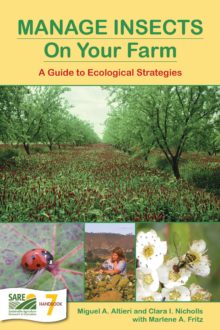Qualities of a Healthy Soil
A healthy soil:
- Accommodates active and diverse populations of beneficial organisms, with plant pest populations minimized by beneficials
- Contains high levels of relatively fresh residues that provide beneficials with food
- Includes high levels of decomposed organic matter, which help it retain both water and readily leachable nutrients
- Contains low levels of such toxic compounds as soluble aluminum and only low to moderate concentrations of salt
- Supports adequate levels of nutrients because excessive nutrients can make the crop more attractive to insect pests or can increase the threat of surface or subsurface water pollution
- Has a sufficiently porous surface, with many pores connected to subsoil to permit easy entry by rainfall or irrigation water
- Has good tilth that allows plant roots to easily penetrate large volumes of soil
